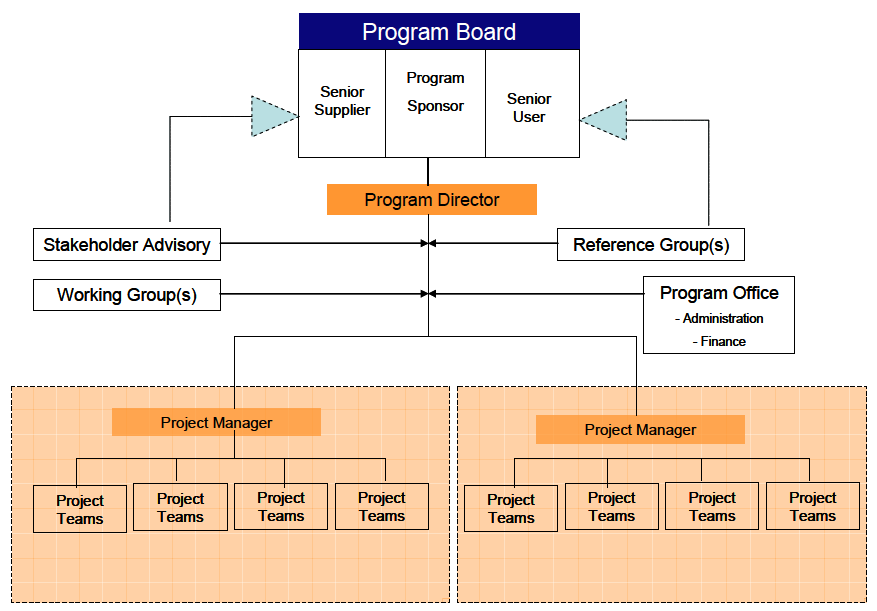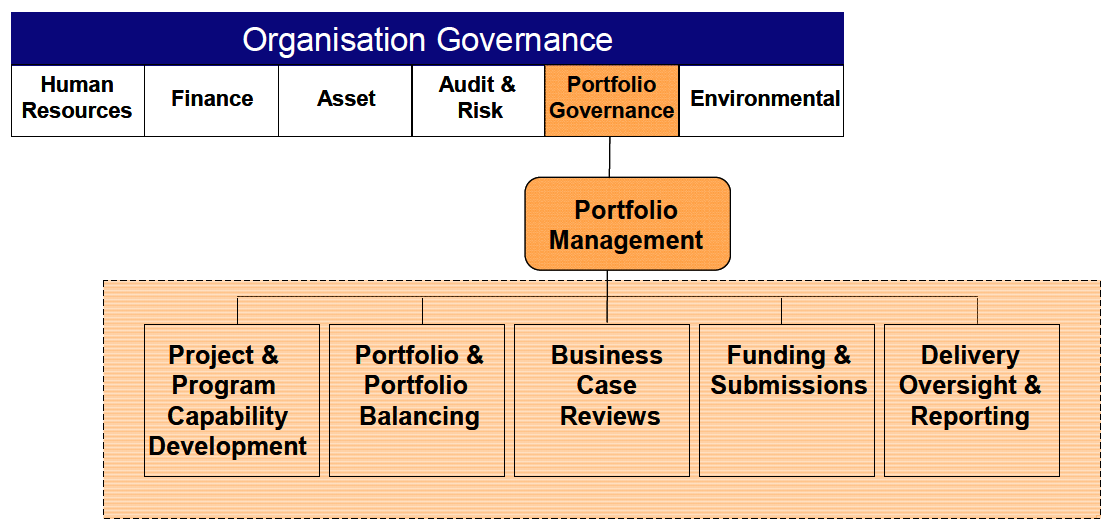Project, program and portfolio governance, the basis of successful delivery
Program management
Programs are groups of related or interdependent projects that need to be coordinated to achieve a strategic objective and to obtain benefits and value that would not be available from managing them individually. The sum of program outcome(s) is greater than the sum of the individual project outcome(s).
Programs are multidimensional, span multiple functions and have multiple types of stakeholders. They also have financial accountability and authority of the projects, and can commit organisational resources. As there are multiple interdependent and dependent projects, the priorities of each of the projects and organisational priority of the program itself becomes critical for management and portfolio balancing.
Program governance and the points of decision making need to be carefully thought through. Recently on rescuing a major program, we had to totally restructure the governance of the program, as it had been set up with each project having its own governance structure. Each project governance structure was making decisions relevant to its own project, without realising that decisions were affecting other dependent and interdependent projects of the program. Project and program governance mechanisms need to be very carefully constructed so that roles and responsibilities are clear, complementary and aligned, to avoid duplication while enabling the program to deliver.
Programs usually have a program office, or program office support, for the collation and aggregation of project schedules and financials to enable the dependencies and interdependencies become more visible. Other key functions that require coordinated management for a program include collation and aggregation of risks and issues, coordination and administration of facilities, resources, procurement, training, standards and methods, contract management and communications. The program office needs to have a tactical focus for it to be effective.
The following program governance structure leverages from project governance and can be used for the management of independent projects that aggregate to deliver the outcomes necessary.
The following program governance structure is quite complex and could be used where there is a combination of interdependent and independent projects.
Portfolio management
A project portfolio includes multiple projects and programs. The word portfolio means a collection of items. An example is an investment portfolio that includes many properties and shares. Similarly, a business will have multiple projects and programs; to manage the delivery, business risk and investment of these projects and programs collectively, portfolio governance is put in place.
The portfolio provides the organisation with a complete view of the programs and projects within an organisation, and this represents the organisation’s commitment of resources and investment to delivering its strategic objectives. Portfolio management directs investment and tracks outcomes, shows where each project or program is in the lifecycle and in a government context ensures alignment to policy. There is considerable portfolio balancing and optimisation that is done on a regular basis which is determined by resource availability, cash flows of the organisation, organisational and environmental changes.
Portfolio governance is usually part of organisation governance. The management of the portfolio, reports into the portfolio governance body.
In conclusion, governance structures are context specific and the structure and competencies need to be carefully considered for each project or program. Each member of the governing body has specific accountabilities, roles and responsibilities and needs to be selected carefully for the successful delivery of a project or program.
There are many statistics available that consistently state that many projects and programs fail to deliver, prove to be disappointments or are just outright failures. This represents a significant waste of investment that could have been put to greater use.
—With Corinne Cadilhac, associate, Building4Business Pty Ltd




